Type of Network Topology: Bus, Ring, Star, Mesh, Tree, P2P, Hybrid
Network topologies describe the methods in which all the elements of a network are mapped. The topology term refers to both the physical and logical layout of a network.
- Physical topology - This type of network is an actual layout of the computer cables and other network devices
- Logical topology - Logical topology gives insight's about network's physical design.
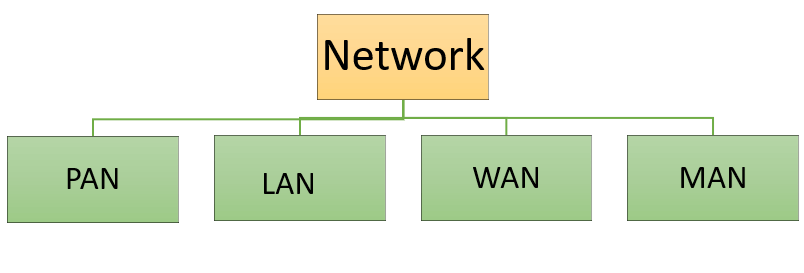
Point to Point
Point-to-point topology is the easiest of all the network topologies. In this method, the network consists of a direct link between two computers.
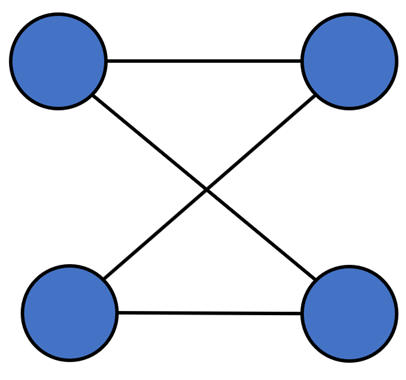
Advantages
- This is faster and highly reliable than other types of connections since there is a direct connection.
- No need for a network operating system
- Does not need an expensive server as individual workstations are used to access the files
- No need for any dedicated network technicians because each user sets their permissions
Disadvantages
- The biggest drawback is that it only be used for small areas where computers are in close proximity.
- You can't back up files and folders centrally
- There is no security besides the permissions. Users often do not require to log onto their workstations.
Bus Topology
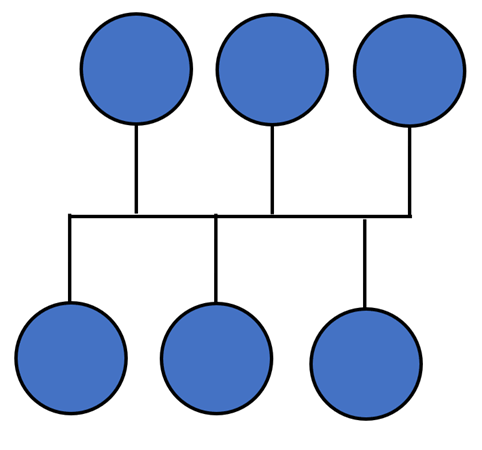
Bus topology uses a single cable which connects all the included nodes. The main cable acts as a spine for the entire network. One of the computers in the network acts as the computer server. When it has two endpoints, it is known as a linear bus topology.
Advantages
- Cost of the cable is very less as compared to other topology, so it is widely used to build small networks.
- Famous for LAN network because they are inexpensive and easy to install.
- It is widely used when a network installation is small, simple, or temporary.
- It is one of the passive topologies. So computers on the bus only listen for data being sent, that are not responsible for moving the data from one computer to others.
Disadvantages
- In case if the common cable fails, then the entire system will crash down.
- When network traffic is heavy, it develops collisions in the network.
- Whenever network traffic is heavy, or nodes are too many, the performance time of the network significantly decreases.
- Cables are always of a limited length.
Ring Topology
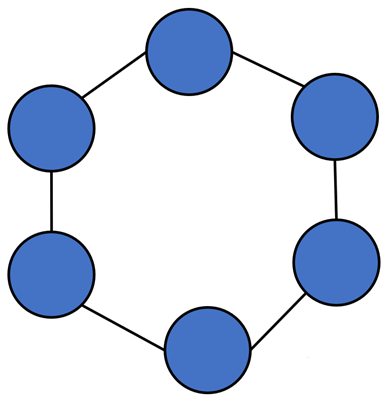
In a ring network, every device has exactly two neighboring devices for communication purpose. It is called a ring topology as its formation is like a ring. In this topology, every computer is connected to another computer. Here, the last node is combined with a first one.
This topology uses token to pass the information from one computer to another. In this topology, all the messages travel through a ring in the same direction.
Advantages
- Easy to install and reconfigure.
- Adding or deleting a device in-ring topology needs you to move only two connections.
- The troubleshooting process is difficult in a ring topology.
- Failure of one computer can disturb the whole network.
- Offers equal access to all the computers of the networks
- Faster error checking and acknowledgment.
Disadvantages
- Unidirectional traffic.
- Break in a single ring can risk the breaking of the entire network
- Modern days high-speed LANs made this topology less popular.
- In the ring, topology signals are circulating at all times, which develops unwanted power consumption.
- It is very difficult to troubleshoot the ring network.
- Adding or removing the computers can disturb the network activity.
Star Topology
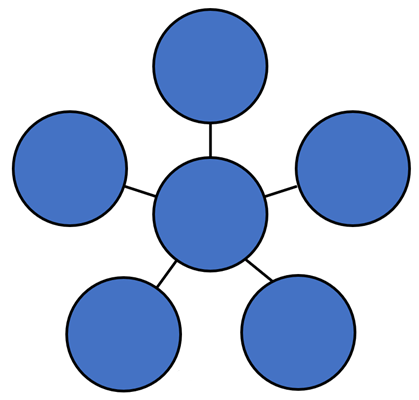
In the star topology, all the computers connect with the help of a hub. This cable is called a central node, and all other nodes are connected using this central node. It is most popular on LAN networks as they are inexpensive and easy to install.
Advantages
- Easy to troubleshoot, set up, and modify.
- Only those nodes are affected, that has failed. Other nodes still work.
- Fast performance with few nodes and very low network traffic.
- In Star topology, addition, deletion, and moving of the devices are easy.
Disadvantages
- If the hub or concentrator fails, attached nodes are disabled.
- Cost of installation of star topology is costly.
- Heavy network traffic can sometimes slow the bus considerably.
- Performance depends on the hub's capacity
- A damaged cable or lack of proper termination may bring the network down.
Mesh Topology
The mesh topology has a unique network design in which each computer on the network connects to every other. It is develops a P2P (point-to-point) connection between all the devices of the network. It offers a high level of redundancy, so even if one network cable fails, still data has an alternative path to reach its destination.
Partial Mesh Topology: In this type of topology, most of the devices are connected almost similarly as full topology. The only difference is that few devices are connected with just two or three devices.
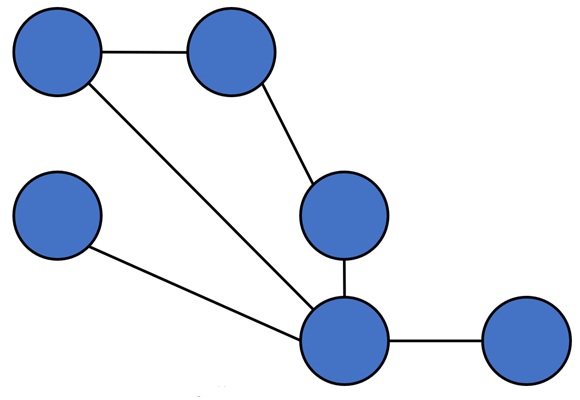
Full Mesh Topology: In this topology, every nodes or device are directly connected with each other.
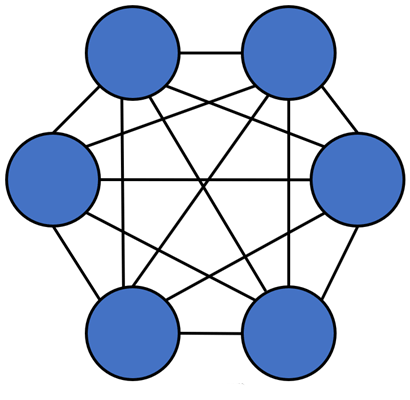
Advantages
- The network can be expanded without disrupting current users.
- Need extra capable compared with other LAN topologies.
- Complicated implementation.
- No traffic problem as nodes has dedicated links.
- It has multiple links, so if any single route is blocked, then other routes should be used for data communication.
- P2P links make the fault identification isolation process easy.
- It helps you to avoid the chances of network failure by connecting all the systems to a central node.
Disadvantages
- Installation is complex because every node is connected to every node.
- Dedicated links help you to eliminate the traffic problem.
- A mesh topology is robust.
- Every system has its privacy and security
- It is expensive due to the use of more cables. No proper utilization of systems.
- It requires more space for dedicated links.
- Because of the amount of cabling and the number of input-outputs, it is expensive to implement.
- It requires a large space to run the cables.
Tree Topology
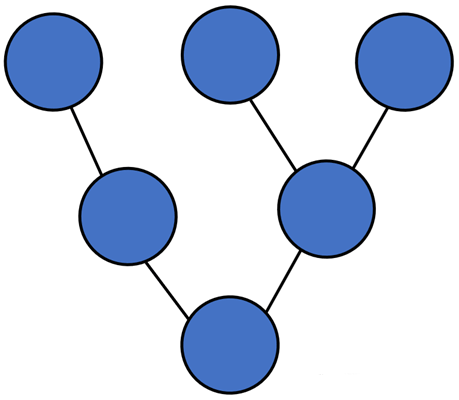
Tree topologies have a root node, and all other nodes are connected which form a hierarchy. So it is also known as hierarchical topology. This topology integrates various star topologies together in a single bus, so it is known as a Star Bus topology. Tree topology is a very common network which is similar to a bus and star topology.
Advantages
- Failure of one node never affects the rest of the network.
- Node expansion is fast and easy.
- Detection of error is an easy process
- It is easy to manage and maintain
Disadvantages
- It is heavily cabled topology
- If more nodes are added, then its maintenance is difficult
- If the hub or concentrator fails, attached nodes are also disabled.
Hybrid Topology
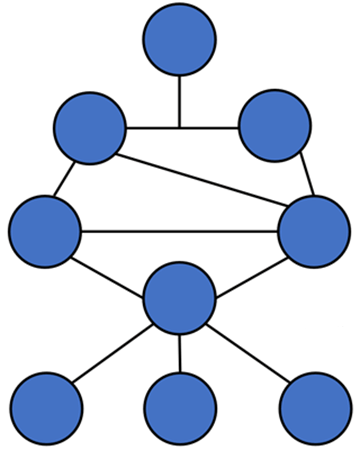
Hybrid topology combines two or more topologies. You can see in the above architecture in such a manner that the resulting network does not exhibit one of the standard topologies.
For example, as you can see in the above image that in an office in one department, Star and P2P topology is used. A hybrid topology is always produced when two different basic network topologies are connected.
Advantages
- Offers the easiest method for error detecting and troubleshooting
- Highly effective and flexible networking topology
- It is scalable so you can increase your network size
Disadvantages
- The design of hybrid topology is complex
- It is one of the costliest processes
How to select a Network Topology?
- Bus topology is surely least expensive to install a network.
- If you want to use a shorter cable or you planning to expand the network is future, then star topology is the best choice for you.
- Fully mesh topology is theoretically an ideal choice as every device is connected to every other device.
- If you want to use twisted pair cable for networking, then you should build star topologies.
Summary
| Topology | What it is |
|---|---|
| P2P | The network consists of a direct link between two computers |
| Bus | Uses a single cable which connects all the included nodes |
| Ring | Every device has exactly two neighboring devices for communication purpose |
| Star | All the computers connect with the help of a hub. |
| Mesh | The mesh topology has a unique network design in which each computer on the network connects to every other. |
| Tree | Tree topologies have a root node, and all other nodes are connected which forming a hierarchy. |
| Hybrid Topology | Hybrid topology combines two or more topologies |